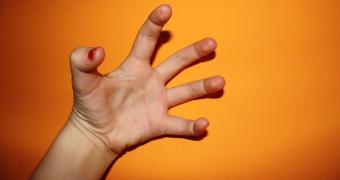Science has come a long way these past few decades, and the news that vein recognition technology is a real thing and might soon become part and parcel of our daily routine more than proves it.
For those unfamiliar with the notion, vein recognition technology is basically a form of biometric identification, and it boils down to having computers distinguish one individual from another based on physical characteristics.
In the case of vein recognition technology, the physical characteristic that computers analyze by means of scanners and then use to identify people is the distribution of veins inside a person's hand, and especially those in the palm.
Apparently, no two people have the same arrangement of veins inside their bodies. Hence, each person's set of blood vessels can serve as some sort of biological barcode and be used to pin down an individual's identity.
According to Live Science, vein recognition technology has been around for several years now. Thus, certain folks in China currently rely on it as a fairly rapid way to withdraw cash from ATM machines without too much trouble.
Still, Fredrik Leifland, a student at Sweden's Lund University, believes that vein recognition technology can also be used to make it possible for people to pay the bills or for their groceries using nothing but the palm of their hand.
The trouble is that, in order for this to happen, quite a lot of effort will have to go into getting banks to embrace this innovative system, linking people's scanned vein patterns with banking information, and then getting restaurants and supermarkets to install palm scanners.
However, Fredrick Leifland argues that, all things considered, promoting the use of vein recognition technology on a global scale has high chances to prove a most inspired decision on the long run. This is because, unlike other methods of payment, this technology is much more reliable.
“Every individual's vein pattern is completely unique, so there really is no way of committing fraud with this system. You always need your hand scanned for a payment to go through,” the student explained in a recent interview.
Together with other technology enthusiasts, Fredrik Leifland has created a company that deals with promoting vein recognition systems. The company, dubbed Quixter, has until now convinced fifteen stores and restaurants close to Lund University's campus to embrace its novel payment system.
All in all, Quixter's vein recognition technology is presently used by about 1,600 individuals. Fredrik Leifland, together with his colleagues at Quixter, plans to expand the business and hopes that it will not be long until this payment system becomes mainstream.

 14 DAY TRIAL //
14 DAY TRIAL //